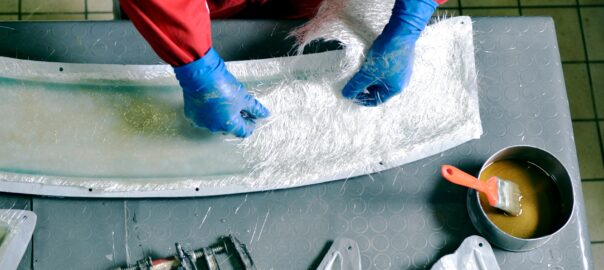The U.S. manufacturing sector has faced significant challenges over the past two decades, with the most notable being the loss of over 3,500 rubber and plastic product companies between 2002 and 2023, as highlighted in a Visual Capitalist article. This decline reflects broader trends in the industry, driven by factors such as globalization, outsourcing, and increased competition from overseas manufacturers. At Om Raj Tech, we recognize the importance of reversing this trend by offering specialized, high-quality manufacturing services that keep production on U.S. soil.

The Impact of Losing 3,500 Companies
The closure of 3,500 rubber and plastic product companies in the U.S. is more than just a number—it represents lost jobs, diminished expertise, and a reduced ability for the country to compete globally. These losses have affected industries across the board, from automotive to consumer goods, leading to increased reliance on foreign suppliers and a weakened domestic supply chain.
For businesses that once relied on local suppliers, the decline has meant longer lead times, higher costs, and challenges in maintaining quality standards. As these companies disappeared, so did the skills and innovation they contributed to the U.S. manufacturing landscape.
The Opportunity to Revitalize U.S. Manufacturing
At Om Raj Tech, we see the decline in U.S. manufacturing as a call to action. By focusing on advanced manufacturing techniques such as injection molding, thermoforming, and fiberglass Resin Transfer Molding (RTM), we aim to fill the gap left by these closures and help rebuild the U.S. manufacturing sector.
Our Custom Injection Molding Services
Injection molding is a cornerstone of our operations, allowing us to produce high-quality plastic parts with precision and efficiency. By keeping our injection molding services based in the U.S., we provide businesses with faster turnaround times, superior quality control, and the ability to meet stringent industry standards—all critical factors in regaining the competitive edge that has been lost with the decline of so many domestic companies.
Advanced Thermoforming Capabilities
Thermoforming offers a versatile solution for producing a wide range of plastic components, from small parts to large structural pieces. Our capabilities in both thick and thin-gauge thermoforming allow us to serve diverse industries, from automotive to medical devices. By maintaining these services domestically, Om Raj Tech helps to strengthen the U.S. manufacturing base and ensures that businesses have access to reliable, high-quality products.
Fiberglass Resin Transfer Molding (RTM) Expertise
Fiberglass RTM is essential for producing durable, lightweight parts that meet the demanding requirements of industries such as aerospace, marine, and automotive. Our expertise in RTM enables us to provide custom solutions that are not only cost-effective but also built to last. By choosing U.S.-based RTM services, businesses can reduce their dependence on foreign suppliers and contribute to the resurgence of American manufacturing.
Why U.S.-Based Manufacturing Matters
The loss of 3,500 companies highlights the risks of relying too heavily on overseas production. At Om Raj Tech, we believe that keeping manufacturing in the U.S. is critical to maintaining quality, reducing lead times, and supporting the local economy. By partnering with us, businesses can:
-
Ensure Consistent Quality: Our close monitoring and strict quality control measures guarantee that every product meets the highest standards.
-
Reduce Lead Times: Domestic production means quicker turnaround times, helping businesses stay agile in a competitive market.
-
Strengthen the U.S. Economy: Choosing U.S.-based services supports local jobs, innovation, and economic growth, helping to rebuild the manufacturing sector.
Conclusion
The decline of over 3,500 rubber and plastic product companies between 2002 and 2023 is a stark reminder of the challenges facing U.S. manufacturing. However, it also presents an opportunity for revitalization. At Om Raj Tech, we are committed to reversing this trend by offering high-quality, custom manufacturing services in injection molding, thermoforming, and fiberglass RTM. By choosing our U.S.-based services, businesses can not only meet their production needs but also contribute to the resurgence of American manufacturing.


